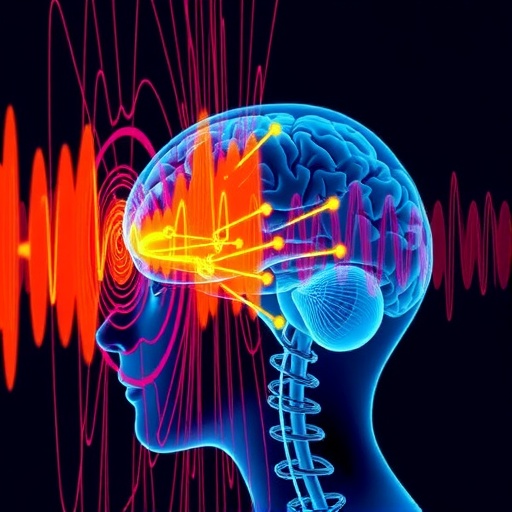Migraine with aura remains one of the more complex and debilitating conditions in the realm of neurology, characterized by recurrent episodes of visual disturbances, sensory alterations, and sometimes linguistic or motor disruptions. These symptoms typically precede the associated headache phase of the migraine, showcasing a unique interplay between neurological triggers and painful manifestations. The pathophysiology underlying migraine with aura has been a subject of investigation for years, and recent advancements in our understanding point toward a phenomenon known as cortical spreading depolarization (CSD) as a pivotal player in both the aura and the headache that follows.
Cortical spreading depolarization is not just an ordinary electrical activity; it is a wave of depolarization that propagates methodically across the cortical surface of the brain. This process is characterized by significant metabolic and electrochemical changes and represents a fundamental alteration in the brain’s homeostasis. The repercussions of this depolarization can lead to a series of metabolic disturbances that are transient yet impactful, culminating in the symptoms characteristic of a migraine aura. Understanding CSD’s role in the genesis of migraine is critical for developing specific interventions aimed at this subset of migraine sufferers.
Through extensive research studies, scientists have drawn connections that bind CSD causally to the headache phase of migraine with aura. The evidence is compelling, indicating that the activation of trigeminal nociceptors — a type of pain receptor in the brain — plays a fundamental role during this phase. Once activated, these nociceptors become sensitized and are involved in a complex cascade of inflammatory processes that worsen the headache experience. One of the significant challenges in diagnosing and treating migraine with aura stems from this pathological complexity.
Experimental models have proven instrumental in illustrating the strong correlations between spreading depolarization and the subsequent emergence of migraine headaches. As researchers probe deeper, they are finding that specific migraine prophylactic treatments can effectively diminish the susceptibility to CSD. This insight is groundbreaking, particularly for patients who struggle with chronic migraines and are often at the mercy of unpredictable and debilitating episodes. By attenuating spreading depolarization, these treatments appear to reduce the fundamental triggers of migraine headaches, thus offering new avenues for therapeutic intervention.
Moreover, abortive treatments designed to tackle migraine pain also exhibit a marked ability to negate the trigeminal pain behaviors evoked by CSD. When looking at the potential for new migraine therapies, this dynamic interplay between managing pain and mitigating the underlying causes is of paramount importance. The dual approach not only alleviates the immediate pain but also strengthens the biological mechanisms aimed at preventing future attacks, which presents an innovative strategy for patients who have long suffered from the debilitating impacts of migraines.
Nevertheless, as promising as this research appears, critical questions linger regarding the precise role of CSD in the early stages of migraine with aura. For instance, researchers must ascertain whether CSD directly precipitates the aura or if it is merely one facet of a more intricate pharmacological orchestra. Refining existing models of CSD remains an urgent task for scientists who wish to unravel this complex relationship further. A deeper understanding of these mechanisms could span a wide array of therapeutic breakthroughs, especially in alternative drug discovery pathways aimed at managing migraine symptoms more effectively.
Encouragingly, there is a growing recognition of the potential for CSD models as effective screening platforms for migraine therapies. As the field advances, these experimental frameworks may reveal novel insights into the physiological processes underlying migraine, thus paving the way for innovative therapeutic strategies. Not only can such models illuminate the biological underpinnings of aura and headache phases, but they also have the potential to identify novel targets for drug interventions, which could revolutionize the way migraines are treated.
Reflecting on the historical context of migraine treatment, it is evident that the understanding of these phenomena has evolved significantly over the years. Previously, much of migraine management hinged upon the symptomatic relief of headache pain, often without an in-depth understanding of the associated aura. The shift towards a more comprehensive understanding of CSD as a diagnostic marker signals a transformative time in neurological research, where prevention and intervention strategies can be tailored more relevantly to the patient’s experience.
As we move further into a new era of migraine research, the implications of CSD extend beyond mere theoretical discussions. The potential to explore the relationship between this neurophysiological phenomenon and various comorbidities related to migraine, including allodynia and psychiatric disorders, could tremendously affect how clinicians approach treatment options. By addressing both the neurological triggers and the associated symptoms, it may be possible to derive multi-faceted treatment plans that enhance overall patient outcomes and quality of life.
In conclusion, the journey of understanding the role of cortical spreading depolarization in migraine with aura is rich with complexity and nuance. The convergence of electrophysiological insights, behavioral analyses, and potential therapeutic applications underscores the importance of ongoing research in this arena. While many questions remain, the evidence supporting CSD as a therapeutic target in migraine opens new avenues for drug discovery and innovative treatment approaches that could potentially alleviate the burden of migraines for countless patients globally.
This new understanding of CSD not only holds promise for current therapeutic endeavors but sets the stage for a future in which migraine prevention is firmly rooted in the neuroscience underpinning the condition itself. Investigating the role of CSD in the realm of migraine will undoubtedly continue to shape the landscape of neurology and pave the way for breakthroughs that enhance patient care and treatment efficacy moving forward.
Subject of Research: The role of cortical spreading depolarization in migraine with aura.
Article Title: Spreading depolarization as a therapeutic target in migraine.
Article References:
Harriott, A.M., Ayata, C. Spreading depolarization as a therapeutic target in migraine.
Nat Rev Neurol 21, 529–543 (2025). https://doi.org/10.1038/s41582-025-01128-0
Image Credits: AI Generated
DOI: https://doi.org/10.1038/s41582-025-01128-0
Keywords: migraine, cortical spreading depolarization, aura, headache, trigeminal nociceptors, therapeutic target, pain management.




